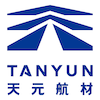512-26-5
Lead citrate
CAS: 512-26-5
Molecular Formula: C12H10O14Pb3
512-26-5 - Names and Identifiers
| Name | Lead citrate |
| Synonyms | NSC 112228 LEAD CITRATE Lead citrate LEAD(II) CITRATE trilead dicitrate Trilead dicitrate Lead citrate (VAN) LEAD(II) CITRATE N-HYDRATE Lead(Ⅱ) citrate trihydrate CITRIC ACID LEAD(II) TRIHYDRATE 1,2,3-propanetricarboxylate, 2-hydroxy-, lead salt LEAD(II) CITRATE TRIHYDRATE, FOR ELECTRO N MICROSCOPY |
| CAS | 512-26-5 |
| EINECS | 208-141-1 |
| InChI | InChI=1/C6H8O7.Pb/c7-3(8)1-6(13,5(11)12)2-4(9)10;/h13H,1-2H2,(H,7,8)(H,9,10)(H,11,12);/p-3 |
512-26-5 - Physico-chemical Properties
| Molecular Formula | C12H10O14Pb3 |
| Molar Mass | 999.8 |
| Boling Point | 309.6°C at 760 mmHg |
| Flash Point | 155.2°C |
| Water Solubility | soluble H2O; very slightly soluble alcohol [CRC10] |
| Vapor Presure | 5.73E-05mmHg at 25°C |
| Appearance | white crystalline powder |
| Storage Condition | RT, dry, sealed |
512-26-5 - Risk and Safety
| Risk Codes | R61 - May cause harm to the unborn child R20/22 - Harmful by inhalation and if swallowed. R33 - Danger of cumulative effects R50/53 - Very toxic to aquatic organisms, may cause long-term adverse effects in the aquatic environment. R62 - Possible risk of impaired fertility |
| Safety Description | S53 - Avoid exposure - obtain special instructions before use. S45 - In case of accident or if you feel unwell, seek medical advice immediately (show the label whenever possible.) S60 - This material and its container must be disposed of as hazardous waste. S61 - Avoid release to the environment. Refer to special instructions / safety data sheets. |
| UN IDs | UN 2291 6.1/PG 3 |
| WGK Germany | 3 |
| Hazard Class | 6.1(b) |
| Packing Group | III |
512-26-5 - Reference
| Reference Show more | 1. [IF=4.86] Cheng Zhang et al."Oxidative stress-elicited autophagosome accumulation contributes to human neuroblastoma SH-SY5Y cell death induced by PBDE-47."Environ Toxicol Phar. 2017 Dec;56:322 2. [IF=2.1] Lei Liu et al."Suppression of calcium‑sensing receptor ameliorates cardiac hypertrophy through inhibition of autophagy."Mol Med Rep. 2016 Jul;14(1):111-120 |
512-26-5 - Reference Information
| EPA chemical information | Information provided by: ofmpub.epa.gov (external link) |
Last Update:2024-04-10 22:29:15

Supplier List
Spot supply
Product Name: Lead citrate Request for quotationCAS: 512-26-5
Tel: 86+027-83389957
Email: 1024042217@qq.com
Mobile: 86+18627766980
QQ: 1024042217
Spot supply
Product Name: Lead citrate Visit Supplier Webpage Request for quotationCAS: 512-26-5
Tel: +86-400-900-4166
Email: product@acmec-e.com
Mobile: +86-18621343501
QQ: 2881950922
Wechat: 18621343501
WhatsApp: +86-18621343501
Spot supply
Product Name: Lead citrate Visit Supplier Webpage Request for quotationCAS: 512-26-5
Tel: +86-18821248368
Email: Int06@meryer.com
Mobile: +86-18821248368
QQ: 495145328
WhatsApp: +86-18821248368
Product Name: Lead citrate Visit Supplier Webpage Request for quotation
CAS: 512-26-5
Tel: 18301782025
Email: 3008007409@qq.com
Mobile: 18021002903
QQ: 3008007409
CAS: 512-26-5
Tel: 18301782025
Email: 3008007409@qq.com
Mobile: 18021002903
QQ: 3008007409
Product Name: Lead citrate Request for quotation
CAS: 512-26-5
Tel: +86-21-56795779
Email: charles7788@worldyachem.com
Mobile: +86-13651600618
QQ: 2850607228
Wechat: +8613651600618
WhatsApp: +8613651600618
CAS: 512-26-5
Tel: +86-21-56795779
Email: charles7788@worldyachem.com
Mobile: +86-13651600618
QQ: 2850607228
Wechat: +8613651600618
WhatsApp: +8613651600618
Spot supply
Product Name: Lead citrate Request for quotationCAS: 512-26-5
Tel: 15013245021
Email: 542374214@qq.com
Mobile: 15013245021
Spot supply
Product Name: Lead citrate Request for quotationCAS: 512-26-5
Tel: 86+027-83389957
Email: 1024042217@qq.com
Mobile: 86+18627766980
QQ: 1024042217
Spot supply
Product Name: Lead citrate Visit Supplier Webpage Request for quotationCAS: 512-26-5
Tel: +86-400-900-4166
Email: product@acmec-e.com
Mobile: +86-18621343501
QQ: 2881950922
Wechat: 18621343501
WhatsApp: +86-18621343501
Spot supply
Product Name: Lead citrate Visit Supplier Webpage Request for quotationCAS: 512-26-5
Tel: +86-18821248368
Email: Int06@meryer.com
Mobile: +86-18821248368
QQ: 495145328
WhatsApp: +86-18821248368
Product Name: Lead citrate Visit Supplier Webpage Request for quotation
CAS: 512-26-5
Tel: 18301782025
Email: 3008007409@qq.com
Mobile: 18021002903
QQ: 3008007409
CAS: 512-26-5
Tel: 18301782025
Email: 3008007409@qq.com
Mobile: 18021002903
QQ: 3008007409
Product Name: Lead citrate Request for quotation
CAS: 512-26-5
Tel: +86-21-56795779
Email: charles7788@worldyachem.com
Mobile: +86-13651600618
QQ: 2850607228
Wechat: +8613651600618
WhatsApp: +8613651600618
CAS: 512-26-5
Tel: +86-21-56795779
Email: charles7788@worldyachem.com
Mobile: +86-13651600618
QQ: 2850607228
Wechat: +8613651600618
WhatsApp: +8613651600618
Spot supply
Product Name: Lead citrate Request for quotationCAS: 512-26-5
Tel: 15013245021
Email: 542374214@qq.com
Mobile: 15013245021
View History





